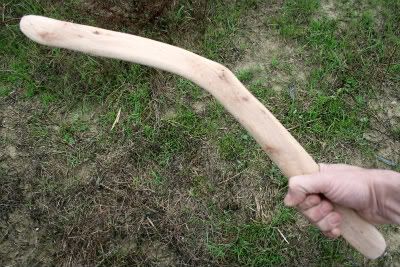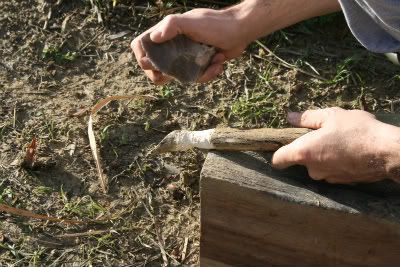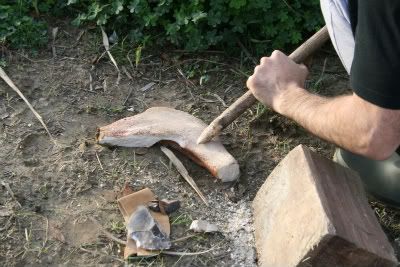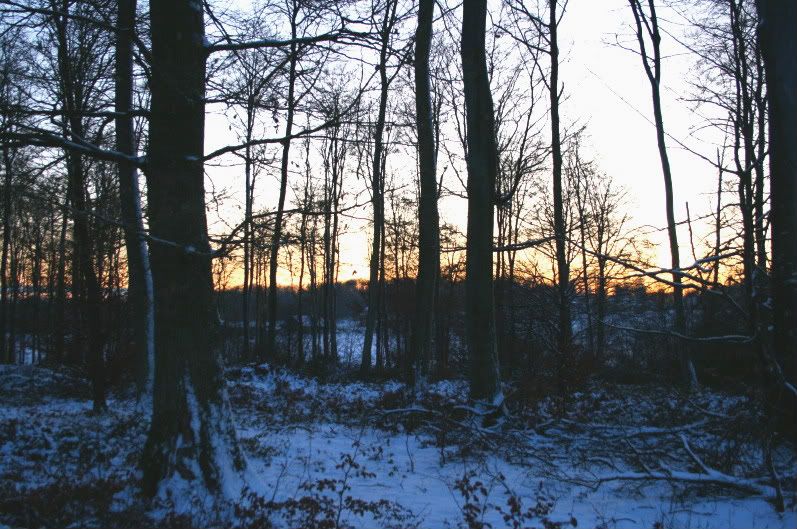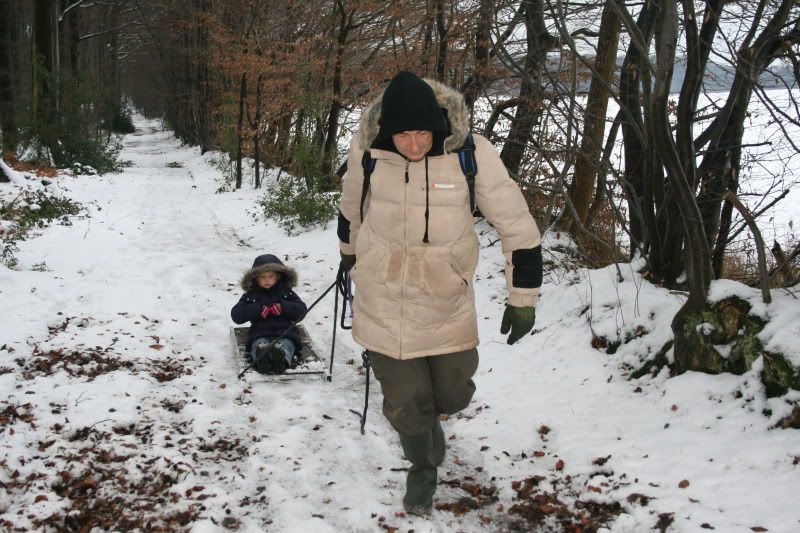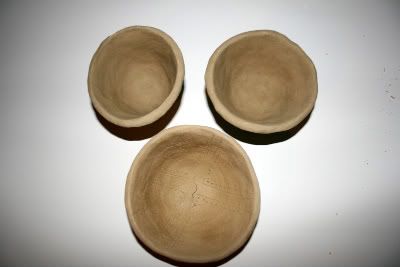

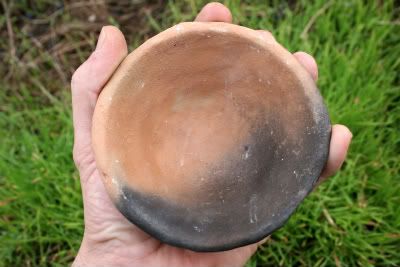
El Neolítico significa un gran cambio en el hombre prehistórico. Se vuelve sedentario, comienza a producir (deja de ser cazador-recolector), aprende a producir útiles pulimentados y es en este período cuando aparece la cerámica, que data de hace unos 8.000 años, generalizándose su uso por todo el mediterráneo hace unos 6.000. Se mezcla la arcilla con materiales desengrasantes (arena, conchas y huesos triturados, cuarzo...) para producir recipientes para conservar y almacenar la producción de alimentos.
El terreno donde ahora vivimos es bastante arcilloso y quería comprobar si esa arcilla serviría para modelar algo de modo primitivo (sin torno) y cocerlo para obtener algún cuenco. Temía que simplemente se agrietase y se rompiera al cocerlo. Y así fué con mi primer intento. Mientras se secaba, preparándose para la cocción, se empezó a agrietar. Así que comencé una nueva masa a la que, esta vez, añadí más arena de río e hice dos nuevos cacharros. Los dejé secar y me decidí a cocerlos. Para mi sorpresa ninguno de los cacharros se rompió; incluso el que estaba agrietado resistió la cocción. Ahora me arrepiento de no haberlos decorado, pero bueno, estoy satisfecho con el resultado. Me gusta el aspecto primitivo que tienen, con diferencias de color.
Neolithic meant a big change for prehistoric men. People became sedentary, they began to produce ( they are no longer hunters-gatherers), they started to pulish their tools and is then when ceramic appear, dating back 8.000 years, spreading through the mediterranean back 6.000 years. Clay is mixed with sand, crushed bones or shells, quartz... in order to make containers to keep food.
The plot were we are living now is quite clayey soil and i wondered if i coud use this clay to make some primitive pottery. I was affraid that it would be no good for this matter and that the pots would just break. that´s what happened with my first attempt; while drying, my first bowl showed a few cracks...no good!. Anyway, i tried with two new ones, adding more river sand to the mixture, and fired the three of them. Surprisingly none of them broke and even the one with the cracks standed the firing process, and i´m quite glad with the result; those different colours make them look quite primitive. I like it.

